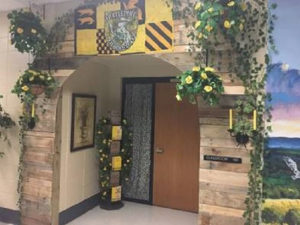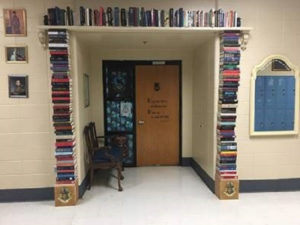Why I Couldn’t Have a “Harry Potter” Classroom
I spent the time between landing my first teaching job and the first day of the school year dreaming about a Harry Potter-themed classroom. It was obvious that I would decorate my space like a classroom straight out of Hogwarts. Not only was I obsessed with the series but my students also read Harry Potter and the Sorcerer’s Stone for their summer reading assignment. It seemed perfect that when they walked into the classroom on their first day of seventh grade, they would enter a place where learning was magical and where books could come alive. After all, wasn’t that my job as their English teacher?
I wanted to go beyond decorating. Since they read the book over the summer, I thought I could really make Harry Potter part of the curriculum. There was so much we could do. I was eager to analyze symbols, compare the books to the films, and listen to podcasts. I would leave no (sorcerer’s) stone unturned when it came to including Harry Potter in my classroom.

These plans all disappeared as quickly as leprechaun’s gold when another teacher informed me that some of my incoming students were not allowed to read Harry Potter. Realizing how uncomfortable a themed classroom would make these students, I rolled up my posters and stowed away my wands.
Despite the few students who couldn’t join in on the phenomenon surrounding the boy wizard, I had other students who asked when we would talk about Harry Potter. They put in the work. They tracked Harry’s heroic journey. They analyzed the importance of Hagrid’s character. That work shouldn’t be for nothing. I was eager to teach lessons centered on Harry Potter, but I couldn’t exclude those who weren’t allowed to read it. This was the same problem all teachers face: the balance between the one and the many.

I decided to incorporate Harry Potter in smaller ways. As an activity on the second day of school, the students took a Sorting Hat quiz. As soon as I told the class they would be sorted like Harry Potter and his friends, a hand shot up. “I didn’t read it!” one student announced. I explained that it was a personality quiz and didn’t require any knowledge of the book or witchcraft. They were skeptical but obliged. It was an opportunity to build community. I wanted to show how people with different personalities and values make up one classroom.
Students continued to ask, “Are we going to talk about Harry Potter?” I felt crushed. I wanted to tell them that I wanted to talk about the book too. Unfortunately, I couldn’t.
Eventually, I took the students to the library to discuss the book. I explained that there would be different discussion questions for students who didn’t read it. “I didn’t read Harry Potter!” one of them shouted (sometimes, twelve-year-olds are terrible at listening to directions). After explaining again, it went smoothly. This was another successful way of incorporating Harry Potter in a way that catered to the students who wanted to talk about the book without alienating students who couldn’t read it.
Ultimately, having a classroom where all the students felt welcome was more important than having a room that apparated students to Hogwarts when they opened the door. Even if it is not a key part of my decor or lessons, Harry Potter is still integral to building relationships with some students. Harry Potter isn’t the first thing you see when you enter my room, but it is there. It is in the students who get to class early to ask my opinion of Fantastic Beasts: The Crimes of Grindelwald. It is in the drawings they excitedly show me of Nifflers. Harry Potter is within them, “but why on earth should that mean that it is not real?” (DH 723).


